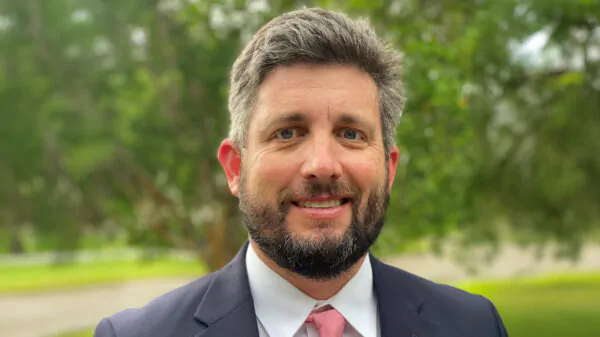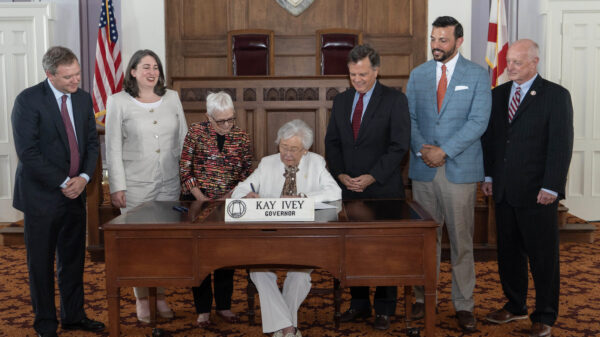By Susan Britt
Alabama Political Reporter
By coincidence the subjects of Medicaid expansion and of funding of Medicaid with money from the Alabama Trust Fund monies are being discussed by state leaders at the same time leaving many people confused that they are one in the same. The only similarity they possess is the timeframe of the discussions. The two issues are vastly different but are only connected because they effect the same agency, Medicaid.
The constitutional amendment on the ballot in September will help fund the already existing Medicaid needs for the next three years, according to proponents, giving Alabama legislators the time to find a revenue solution.
Without the CA, Medicaid could potentially see a reduction of nursing homes, loss of healthcare providers who accept Medicaid, loss of jobs in medical fields, closing of rural hospitals, further reductions in provider payments and overall loss of services for Alabamians who depend on the program for their healthcare.
In April, Dr. Don Williamson took over the reins of Alabama’s Medicaid Agency. After which he identified that Alabama Medicaid needs $603 million to fund the state’s portion for fiscal year 2013. The General Fund was prepared to provide only $418 million leaving a shortfall of $184 million.
The Governor and legislators passed a proposed constitutional amendment to be voted on in a special election on September 18 asking Alabama’s voters to approve taking the shortfall from the Alabama Trust Fund (ATF). If passed the amendment will allow another two years of General Fund shortfalls to also be funded by the ATF.
The ATF is a fund that was set up as a savings account that pools royalties from Alabama’s oil and gas proceeds. One of the main contentions of the CA is that there is no plan to pay back the funds, however, it is estimated that the fund will replenish itself with only a few years.
Should the CA fail, it is speculated that the Legislature will be called into special session to try to find an alternative solution to fund the existing Medicaid needs.
+++++++++++++
The Medicaid Expansion discussions are a direct result of the the Supreme Court upholding portions of the Patient Protection and Affordable Care Act. While the court upheld the individual mandate and the healthcare exchanges, it left the expansion of Medicaid up to the individual states as an option.
The individual mandate (which says citizens must be covered by some sort of healthcare insurance or face a federally imposed penalty in the way of a tax) remains because that has a role in what happens to individuals who need Medicaid. The healthcare exchanges remain because individuals are going to be driven to the exchange to purchase insurance to comply with the individual mandate.
Currently Medicaid covers pregnant women and children up to 6 years old at 133 percent of the federal poverty level. It also covers children from age 6 until their 19 birthday at 100 percent of the poverty level. The elderly in nursing homes are covered at 300 percent of the poverty level as are the disabled. But for childless adults, for parents whose children may be covered but they are not, and makes more than 11 percent of the federal poverty level, they are not eligible.
According to Dr. Don Williamson, interim Director of Medicaid, who spoke at the Tuesday Joint Legislative Committee on Medicaid Policy meeting, “With the Medicaid expansion to 133 percent of the poverty level for children less than 19 years of age remains mandatory [by the ACA] and begins January 1, 2014. For Alabama, that means is that by 2014, the 25,000 children who are currently in AllKids (between 100 and 133 percent of the poverty level) will be moved to Medicaid as part of the expansion.”
The big gap that remains is childless adults and parents. If Medicaid chooses not to expand then individuals below 100 percent of the poverty level will not be eligible for a subsidy through the health insurance exchange. Subsidies are available only to people between 100 percent and 400 percent of the federal poverty level. This will leave many people vulnerable because they do not qualify for a subsidy but yet will be responsible for the penalty. However, since the Secretary of Health has the authority to waive the penalty in certain instances.
“If you do not expand Medicaid, you are not making it worse. You are not taking people who have to buy insurance then making insurance not available and then taxing them,” said Williamson.
The ACA proposes for the years 2015-2016 to provide the expansion program will be 100 percent federally funded, 2017 Alabama will match at 5 percent, in 2018 at 6 percent match, in 2019 a 7 percent match and then in 2020 the match tops out at 10 percent. After that, 90 percent of the program will be federally funded with a 10 percent match from Alabama.
Williamson estimates that Alabama will spend $64 million over the next 6 years to take care of existing Medicaid eligibles that will come to the program even if it doesn’t expand Medicaid. “That only generates $173 million in federal funding. If expanded, it will swell to over $250 million over 6 years,” said Williamson.
If expanded he estimates it would increase from between $406-$440 million in new state dollars which will generate between $10.1-$10.8 billion new federal dollars.
“If we could go to 100 percent of the poverty level we could cover 355,000 of the 420,000 that might otherwise go in at under 133 percent. More than three-quarters of people that we could potentially add are below the poverty level. If we could simply get to the poverty level it would make a big difference and potentially cost us less,” said Williamson.
The Joint Legislative Committee on Medicaid Policy is currently considering the matter and will reconvene on September 12, 2012 to continue discussion.













































